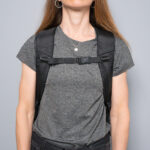Choosing the right camera for travel can be overwhelming. You want something that captures stunning images, is versatile enough for various situations, and, crucially, won’t weigh you down as you explore new destinations. For years, friends and readers have asked me for camera recommendations, and it’s always the same balancing act: features versus portability. So, I’ve consolidated my advice and experiences into this guide to help you find the Best Compact Travel Camera for your needs in 2024.
Update for 2024: It’s been a few years since I first wrote this article, and I consistently revisit my recommendations to ensure they remain current. Even in 2024, after reviewing the latest releases and technological advancements, my top pick for the best travel camera remains the same. The Panasonic Lumix GX series continues to impress with its blend of performance and size. The compact camera recommendation, the Canon G7x series, has also seen a worthy update, reinforcing its position in the market.
If you’re ready to dive straight into my recommendation for the best compact travel camera, jump to the section below:
Discover the Best Compact Travel Camera for 2024
Otherwise, keep reading to understand the key features to consider when selecting a travel camera and how to make the best choice for your adventures.
This post contains affiliate links. As an Amazon Associate, I earn from qualifying purchases. Rest assured, the opinions expressed here are based on my genuine experience and photographic preferences.
Why Upgrade from Your Smartphone for Travel Photography?
In an age where smartphone cameras are increasingly sophisticated, the question naturally arises: why bother switching to a dedicated camera? If you’re considering upgrading, it’s essential to understand the compelling reasons to carry a separate camera alongside your phone. Otherwise, that new camera might end up gathering dust at home.
Smartphone cameras have made remarkable strides in recent years, largely thanks to computational photography. They excel at features like HDR, panoramas, and seamless GPS tagging, often outperforming traditional cameras in these areas due to advanced software processing. The convenience of instant sharing on social media is another undeniable advantage.
Smartphone cameras leverage impressive software to achieve outstanding results, making them incredibly versatile for everyday photography.
Here’s an example of a panorama captured using an iPhone. Despite having my Canon DSLR with me at the time, the iPhone’s panorama feature was simply more convenient and efficient.
Exposure: 1/900s, ƒ/2.2, ISO 100
Focal Length: 4.15mm
Camera: iPhone SE
Date & Time: April 10, 2017, 7:17 pm
The adage “the best camera is the one you have with you” rings true, and for many, that’s their smartphone. However, if you’re seeking the best compact travel camera, you’re likely looking for more than smartphone capabilities can offer.
Identifying Your Photography Needs for Travel
If you’re considering a dedicated camera for travel, the next crucial question is: “What do you intend to photograph?”. While many might want to capture family moments, this guide focuses specifically on the needs of travel photography.
 Sunset over Bagan's temples, illustrating the dynamic range and detail achievable with a dedicated travel camera.
Sunset over Bagan's temples, illustrating the dynamic range and detail achievable with a dedicated travel camera.
Exposure: 1/15s, ƒ/11, ISO 500
Focal Length: 109mm
Camera: Canon EOS 70D
Date & Time: September 29, 2016, 5:54 pm
Defining a Great Travel Camera: Key Features
While some camera features are universally important, travel photography introduces unique priorities. Portability and versatility become paramount when you’re on the move. The ideal travel camera should be adaptable, capable of capturing expansive landscapes and distant details without being cumbersome to carry.
There’s no single “perfect” camera for every scenario, but the best compact travel camera excels at handling diverse situations proficiently. It should allow you to capture sweeping vistas and zoom in to isolate interesting subjects.
 Sunset over Bagan's temples, illustrating the dynamic range and detail achievable with a dedicated travel camera.
Sunset over Bagan's temples, illustrating the dynamic range and detail achievable with a dedicated travel camera.
Exposure: 1/100s, ƒ/6.3, ISO 400
Focal Length: 135mm
Camera: Canon EOS DIGITAL REBEL XTi
Date & Time: September 29, 2015, 11:41 am
Furthermore, your technical comfort level influences camera choice. A camera for a beginner photographer will differ significantly from one suited for an advanced amateur. My recommendations are geared towards users who are comfortable with manual settings and post-processing, but adaptable for anyone willing to learn and grow their photography skills while traveling.
Essential Features for a Travel Camera: Balancing Trade-offs
To choose the best compact travel camera, it’s essential to understand the key features and the trade-offs associated with each. Here’s a breakdown of the features that matter most for travel photography:
Sensor Size: Image Quality Foundation
Sensor size is a critical factor influencing image quality. Generally, a larger sensor captures more light, resulting in better detail, dynamic range, and low-light performance. The sensor acts as the digital equivalent of film in traditional cameras.
 Sensor size comparison chart illustrating the differences between various sensor formats from smartphone to full-frame.
Sensor size comparison chart illustrating the differences between various sensor formats from smartphone to full-frame.
Trade-off: Larger sensors typically mean higher camera prices and larger, heavier lenses.
Full-frame sensors are favored by professional photographers for their superior image quality. APS-C sensors are commonly found in consumer DSLRs and mirrorless cameras, offering a good balance of size and performance. Micro Four Thirds sensors are smaller than APS-C but still significantly larger than those in most point-and-shoot cameras and smartphones, offering a sweet spot for portability and quality. Smartphone sensors are considerably smaller, limiting their light-gathering capabilities.
Lens: The Eye of the Camera
After the sensor, the lens is the next most crucial component affecting image quality. Lenses dictate how light is captured and projected onto the sensor. However, lens choice involves significant trade-offs, particularly in size and weight, which are critical for travel.
A fundamental principle of physics dictates that, on average, larger sensors require larger lenses to maximize their potential. Therefore, while larger sensors offer superior image quality, the accompanying lenses can negate the portability advantage.
Trade-off: Lens size and weight are inversely related to zoom range and lens speed (maximum aperture). Faster lenses (wider apertures) and longer zoom ranges often mean bulkier and heavier lenses.
Traveling with extremely large lenses can be impractical and cumbersome.
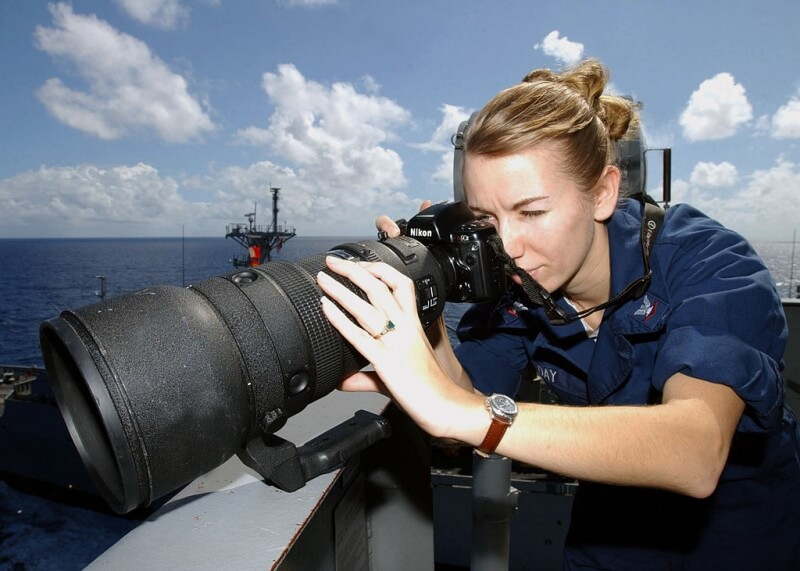 A US Navy member using a massive 400mm telephoto lens, highlighting the impracticality of large lenses for travel.
A US Navy member using a massive 400mm telephoto lens, highlighting the impracticality of large lenses for travel.
Interchangeable Lenses: Versatility on Demand
The ability to change lenses is a game-changer for photographers seeking versatility. Interchangeable Lens Cameras (ILCs) allow you to adapt to different shooting scenarios by selecting the appropriate lens for the task at hand.
Trade-off: Carrying multiple lenses increases versatility but also adds to the overall weight and bulk of your camera gear.
Interchangeable Lens Cameras (ILCs) empower you to choose the perfect lens for each photographic situation, maximizing creative possibilities.
Image Stabilization (IS): Shooting Sharp in Challenging Conditions
Image stabilization is invaluable for travel photography, where tripods are often inconvenient or impractical. Effective IS minimizes camera shake, allowing for sharper images, especially in low light or when using longer focal lengths. While IS is excellent for stationary subjects, it doesn’t compensate for motion blur caused by moving subjects.
Trade-off: Better image stabilization is typically found in newer, often more expensive, cameras. However, the benefits in image sharpness and low-light performance are often worth the investment.
Here’s an example of a handheld shot of a skyline, demonstrating the effectiveness of image stabilization in low-light conditions without a tripod.
 Handheld skyline panorama showcasing the benefits of image stabilization for low-light travel photography.
Handheld skyline panorama showcasing the benefits of image stabilization for low-light travel photography.
Exposure: (Exposure data missing in original article)
Focal Length: (Focal length data missing in original article)
Camera: (Camera data missing in original article)
Date & Time: (Date & Time data missing in original article)
Size and Weight: Portability is Key
For travel, size and weight are paramount. You need a camera that’s easy to pack, carry around all day, and doesn’t attract unwanted attention. Discreetness is also beneficial for street photography and security in crowded areas.
Many photographers opt for DSLRs but find them too bulky and heavy to carry consistently, leading to the camera being left behind.
Trade-off: Smaller cameras often mean smaller sensors and fewer physical controls. Features like viewfinders and tilting screens may be omitted, and settings can become less accessible, buried within menus.
Manual Settings: Creative Control
Having manual settings is essential for photographers who want creative control over their images. Even if you start with automatic modes, you’ll likely want to explore aperture priority, shutter priority, and full manual modes as you develop your skills. A camera offering these controls allows you to adapt to various lighting conditions and achieve specific creative effects.
Trade-off: Cameras with readily accessible manual controls often require a slightly larger body to accommodate dials and buttons. The smallest cameras may offer manual settings, but accessing them through menus can be cumbersome, hindering quick adjustments.
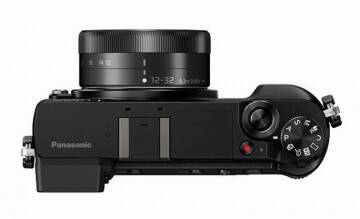 Close-up of a camera showing manual control dials, emphasizing the importance of accessible settings.
Close-up of a camera showing manual control dials, emphasizing the importance of accessible settings.
Wireless Capability: Connectivity on the Go
Wireless connectivity, via Wi-Fi or Bluetooth, is incredibly useful for travelers. It allows for quick transfer of photos to smartphones for sharing on social media or backing up images while on the road.
Trade-off: Newer cameras tend to have more robust wireless features, but this often correlates with higher price points.
Cost: Balancing Budget and Needs
Cost is a significant factor for most photographers. Especially for a travel camera, which is more susceptible to loss, damage, or theft, finding a balance between features and price is crucial. A mid-range camera often provides the best value for travel photography.
Trade-off: Budget constraints may require compromises on certain features. However, prioritizing essential features like image quality, portability, and versatility within your budget is key to finding the best compact travel camera for you.
Bonus Features: Nice-to-Haves for Travel Photography
Beyond the essential features, several bonus features can enhance your travel photography experience:
Video: Most modern cameras offer video recording, some in 1080p HD and others in 4K Ultra HD. If video is important to you, consider cameras with effective video image stabilization.
In-camera HDR and Panorama: While smartphones excel at these, having these features built into your camera can streamline your workflow and save post-processing time.
In-camera features simplify image creation, allowing you to spend more time capturing moments and less time editing at a computer.
Weather and Water Sealing: For adventurous travelers, weather-sealed cameras offer protection against dust and moisture, increasing durability and peace of mind in challenging environments. Waterproof cameras offer even greater protection but often come with trade-offs in other areas.
Portability Enhancements: Small conveniences, like USB charging, can significantly improve the travel experience. Being able to charge your camera with a standard micro-USB cable means you can use portable power banks or readily available chargers, simplifying charging on the go.
The Best Compact Travel Camera Recommendation for 2024: Panasonic Lumix GX85/GX80
After considering all these factors, my top recommendation for the best compact travel camera in 2024 is the Panasonic Lumix GX85/GX80.
This mirrorless Micro Four Thirds camera strikes an exceptional balance of size, features, and image quality, making it ideal for travel photography. Its rangefinder-style design is both stylish and functional.
Buy the Panasonic Lumix GX85 Now
Let’s delve into how the Panasonic GX85 excels in the key features we discussed:
Optimal Sensor Size for Travel
The Panasonic GX85 features a Micro Four Thirds sensor. It’s larger than sensors found in point-and-shoot cameras and significantly larger (approximately 13 times bigger!) than smartphone sensors. This larger sensor size translates to improved light gathering, resulting in superior image quality, especially in low-light conditions and greater dynamic range.
While entry-level DSLRs and APS-C mirrorless cameras offer larger sensors, the Micro Four Thirds system provides a compelling advantage in terms of overall system size and weight.
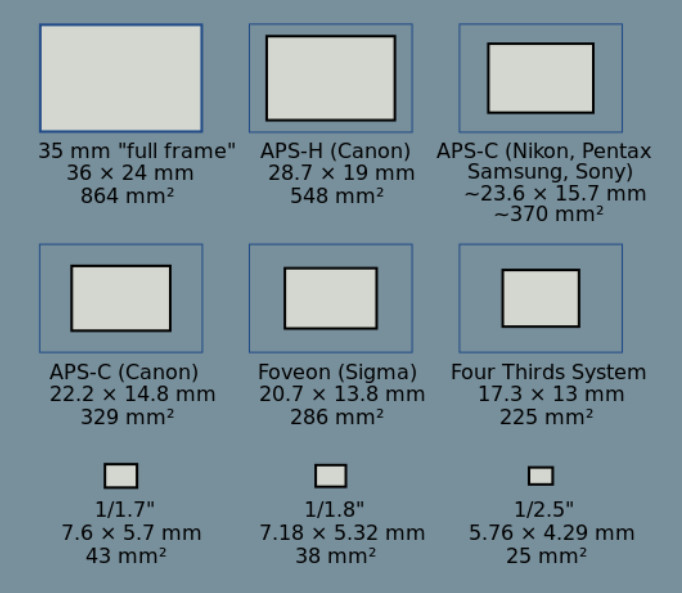 Sensor size comparison highlighting the balance offered by Micro Four Thirds sensors for travel.
Sensor size comparison highlighting the balance offered by Micro Four Thirds sensors for travel.
The seemingly small difference in sensor size between APS-C and Micro Four Thirds leads to a significant reduction in lens size and weight for the Micro Four Thirds system. This compactness is a major benefit for travel photographers.
Versatile Lens Options for Every Travel Scenario
When choosing a lens for travel, versatility is key. A standard zoom lens covering the 24-70mm equivalent focal range is often ideal for general travel photography, capturing landscapes, portraits, and street scenes effectively. This range is frequently covered by kit lenses included with cameras.
Even fixed-lens compact cameras, like the Canon G7x Mark III, offer similar focal ranges (24-100mm equivalent).
For a visual understanding of different focal lengths, Nikon provides a helpful lens simulator where you can experiment with various lens ranges.
Interchangeable Lenses: Adapting to Diverse Travel Photography
For situations demanding more reach, such as wildlife photography or capturing distant landmarks, interchangeable lenses become essential. Imagine needing to photograph wildlife on safari or capture detailed shots of architectural details from afar – a standard zoom lens might not suffice.
Interchangeable lenses provide the flexibility to choose the right tool for each photographic challenge. Just as you would pack different shoes for various travel activities, having multiple lenses allows you to adapt your camera to diverse shooting scenarios.
For everyday exploration, a compact and lightweight “walkaround” lens is ideal.
For low-light photography, a fast prime lens excels. And for dedicated photography outings, a longer zoom lens extends your reach.
The Micro Four Thirds system is renowned for offering the smallest interchangeable lens camera setup. The shared lens mount standard between Panasonic and Olympus means a vast selection of compatible lenses (over 80!) from various manufacturers, providing extensive creative options.
If the lens selection seems overwhelming, I’ve compiled a curated list of excellent micro four thirds lenses for travel photography to simplify your choices.
Alternative Best Compact Travel Camera: Fixed Lens Option
If you prefer the simplicity of a fixed lens camera and know you won’t need interchangeable lenses, the Canon G7x Mark III is my top recommendation for the best compact travel camera in the point-and-shoot category.
 Canon G7x Mark III, a top point-and-shoot compact travel camera recommendation.
Canon G7x Mark III, a top point-and-shoot compact travel camera recommendation.
Buy the Canon G7x Mark III now
The Canon G7x Mark III boasts a large 1-inch sensor, the largest sensor size available in most compact cameras, delivering excellent image quality for its class.
Bag Recommendation: Pair your compact camera with a DIY Camera Bag for a truly portable and discreet setup.
Its 24-100mm equivalent lens is fast, with an aperture of f/1.8 at the wide end and f/2.8 at the telephoto end. This fast lens excels in low-light conditions and allows for beautiful background blur (bokeh) for portraits and creative shots.
Wired Magazine hailed the Canon G7x Mark II (predecessor to Mark III) as “likely to be the best pocket camera Canon has ever produced.”
The G7x Mark III features a 180-degree tilting screen, perfect for selfies and vlogging. It also offers in-camera USB charging, enhancing its travel-friendly nature. It’s a fantastic, affordable compact travel camera with impressive image quality, despite its fixed lens.
Unmatched Portability for Travel
The Micro Four Thirds system, in general, is known for its compact size, making it ideal for travel. The Panasonic GX85 stands out even within the Micro Four Thirds range for its particularly small and lightweight body.
When I first acquired the GX85, I intended it to replace my larger Canon 70D DSLR. However, its compact size surprised me – it’s so small it can even replace a point-and-shoot camera, offering DSLR-like quality in a pocketable form factor.
The GX85 includes a built-in electronic viewfinder (EVF), beneficial for composing shots in bright sunlight, and a tilting screen for versatile shooting angles. These features enhance creative possibilities and make capturing unique perspectives easier.
The discreet size of the GX85 is also advantageous in sensitive situations. In crowded markets or locations with restrictions on professional cameras, its smaller size helps it blend in, allowing for more candid and unobtrusive photography.
Furthermore, the GX85’s USB charging capability is a major asset for travelers. Charging via a standard micro-USB cable eliminates the need for proprietary chargers and allows for convenient charging using portable power banks – a crucial feature for extended travel.
Exceptional Image Stabilization for Sharp Travel Photos
Image stabilization is a game-changing feature for travel photography, and the GX85 excels in this area. Its 5-axis in-body image stabilization (IBIS), when combined with stabilized lenses, provides up to 4 stops of shake reduction. This allows for remarkably sharp handheld shots, even in low light or when shooting panoramas handheld.
The image stabilization technology in cameras like the GX85 has advanced significantly, enabling handheld shots at shutter speeds previously only achievable with a tripod. Some photographers are even capturing handheld shots of the Milky Way, demonstrating the incredible capabilities of modern IS systems!
Full Manual Control for Creative Expression
Having full manual control over your camera settings is essential for photographers seeking creative expression and adaptability in diverse shooting conditions. The GX85 offers a level of control comparable to a DSLR, with dedicated dials and buttons for quick adjustments to aperture, shutter speed, ISO, and other settings. This intuitive user interface is crucial for a compact travel camera, ensuring settings are easily accessible and adjustments can be made swiftly without frustration.
This level of manual control is a primary reason why a dedicated camera surpasses smartphone capabilities. While smartphones offer some manual settings, they are often less accessible and less intuitive to control compared to a camera like the GX85. If you are comfortable with automatic modes and don’t plan to explore manual settings or interchangeable lenses, a smartphone might suffice. However, for aspiring photographers, the manual control offered by cameras like the GX85 is invaluable for learning and growing.
Convenient Wireless Sharing on the Road
For travelers who like to share their photos online while on the go, the Panasonic GX85 offers built-in Wi-Fi. While camera Wi-Fi systems can sometimes be a bit finicky, the GX85’s implementation is functional, allowing for wireless transfer of images to smartphones for quick sharing on social media. You can transfer single images or batches, in both JPEG and RAW formats, and even geotag images if you utilize the camera’s GPS logging feature.
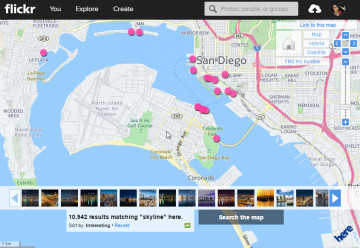 Flickr map showing geotagged photos of San Diego, highlighting the desire for seamless GPS integration in cameras.
Flickr map showing geotagged photos of San Diego, highlighting the desire for seamless GPS integration in cameras.
Ideally, cameras would offer seamless GPS tagging like smartphones. However, GPS integration in cameras can be power-intensive and may struggle with signal acquisition in certain environments. Until camera manufacturers develop more efficient GPS solutions, manual GPS logging via smartphone apps remains a common workaround for geotagging travel photos.
Despite these limitations, the GX85’s Wi-Fi capability provides a convenient way to share travel photos online directly from the camera.
Areas for Improvement
While the Panasonic GX85 is an exceptional travel camera, there are a few minor drawbacks:
The GX85’s extensive feature set can be slightly complex, and some features are mutually exclusive. For example, HDR mode might be unavailable when burst mode or RAW-only capture is enabled. While these limitations are often logical from a technical standpoint, they can be slightly confusing in the field.
The touchscreen, while generally useful, can be overly sensitive. Accidental touches, even from your nose while using the viewfinder, can inadvertently change focus points or settings. Many users, including myself, opt to disable most touchscreen functions to avoid accidental inputs. Improved touchscreen design to prevent accidental activation would be a welcome enhancement.
Battery life is another area for improvement. The GX85’s battery life is adequate but not exceptional, and heavy usage can drain the battery relatively quickly. Carrying spare batteries is highly recommended, and investing in extra batteries is a wise decision for GX85 owners.
Unbeatable Value for Money
The most compelling aspect of the GX85 is its exceptional value. For its class, the GX85 is remarkably affordable. Often available in kits with two lenses (a versatile 12-32mm pancake lens and a 45-150mm zoom lens) for around $700, it offers incredible bang for your buck.
Wired Magazine aptly described the Panasonic GX85 as, simply, “The Best Camera For The Money.”
In the past, camera comparison tools highlighted the GX85 as a standout in its price range, often competing with cameras in lower classes. The only other camera that sometimes appeared in similar searches was the Olympus OM-D E-M10, which is an older model with a larger, DSLR-style form factor.
The Panasonic GX85’s combination of features, performance, and affordability makes it not only the best compact travel camera but also the best budget travel camera available.
A True Gem for Travel Photographers
In conclusion, the Panasonic GX85/GX80 is a truly outstanding budget travel camera. It meets and exceeds the essential feature requirements for frequent travelers, offering a remarkable balance of portability, versatility, image quality, and affordability. Switching from a larger DSLR to the compact GX85 has been a transformative experience for my travel photography, and I highly recommend it.
Note that the GX85 is marketed as the GX80 in Europe. Additionally, there’s another Panasonic camera called the G85, which is a different model. For those considering both, I’ve written a detailed comparison of the GX85 and G85 to help clarify the differences.
The Panasonic GX85/GX80 unequivocally earns my vote for the Best Camera For Travel in 2024, and also stands out as the best mirrorless camera for travel in its class.
Ready to make the switch? Buy the Panasonic Lumix GX85 now
If you’re still leaning towards a fixed-lens option for ultimate simplicity, the Canon G7x Mark III remains my top pick for the best compact camera for travel in the point-and-shoot category.
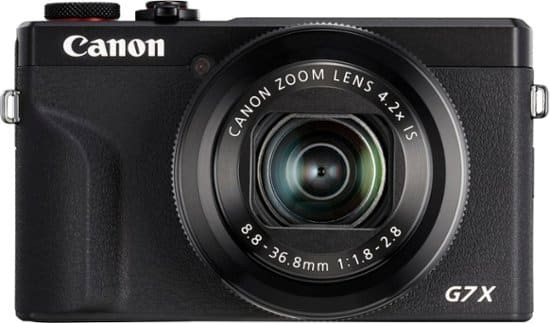 Canon G7x Mark III, highlighted as the best compact point-and-shoot travel camera for 2024.
Canon G7x Mark III, highlighted as the best compact point-and-shoot travel camera for 2024.
Buy the Canon G7x Mark III now
This post contains affiliate links. As an Amazon Associate, I earn from qualifying purchases. Rest assured, the opinions expressed here are based on my genuine experience and photographic preferences.
Essential Accessories for the GX85 Already purchased the GX85 and looking for accessories? Explore my list of the best accessories for the GX85, including cases, grips, batteries, and lenses to enhance your travel photography kit.

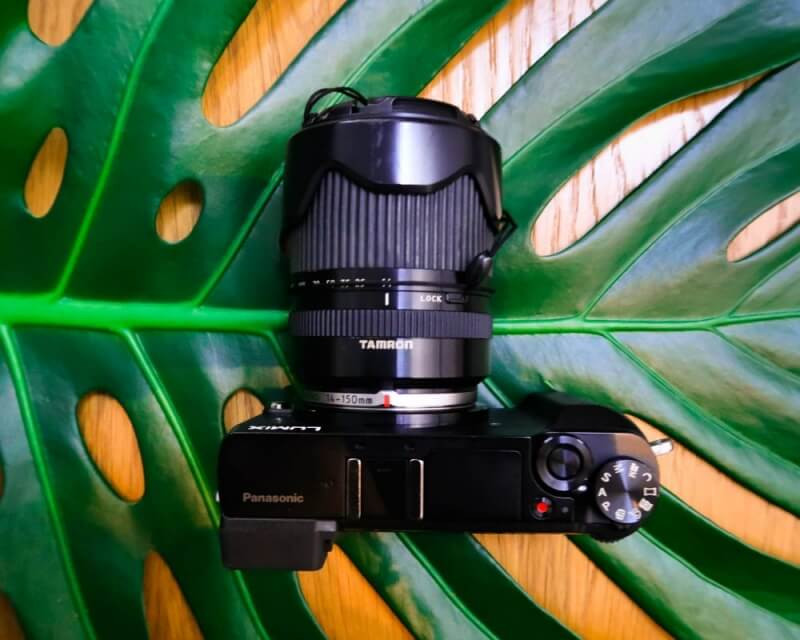 Panasonic GX85 transformed with a zoom lens, demonstrating its adaptability for different photography needs.
Panasonic GX85 transformed with a zoom lens, demonstrating its adaptability for different photography needs.